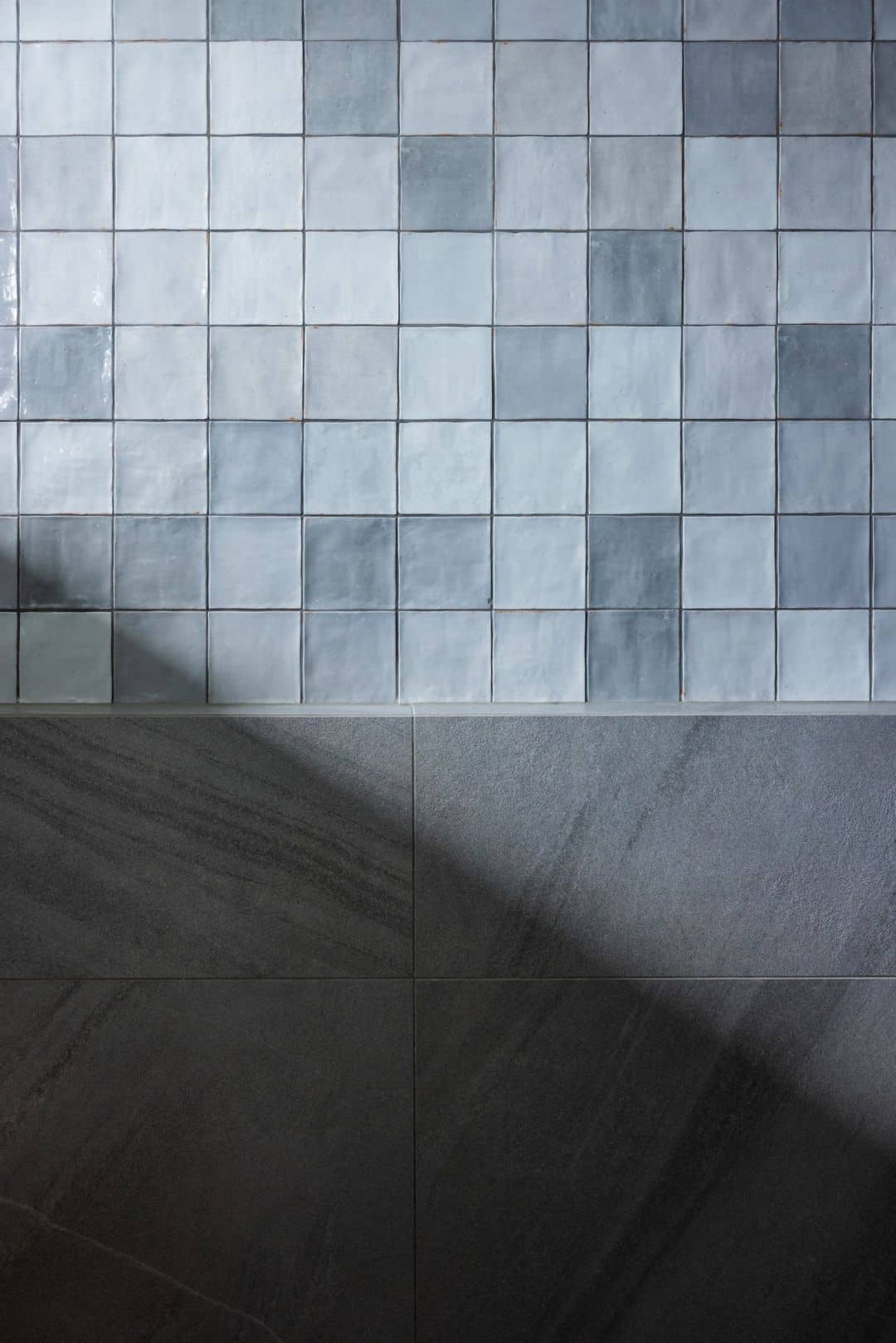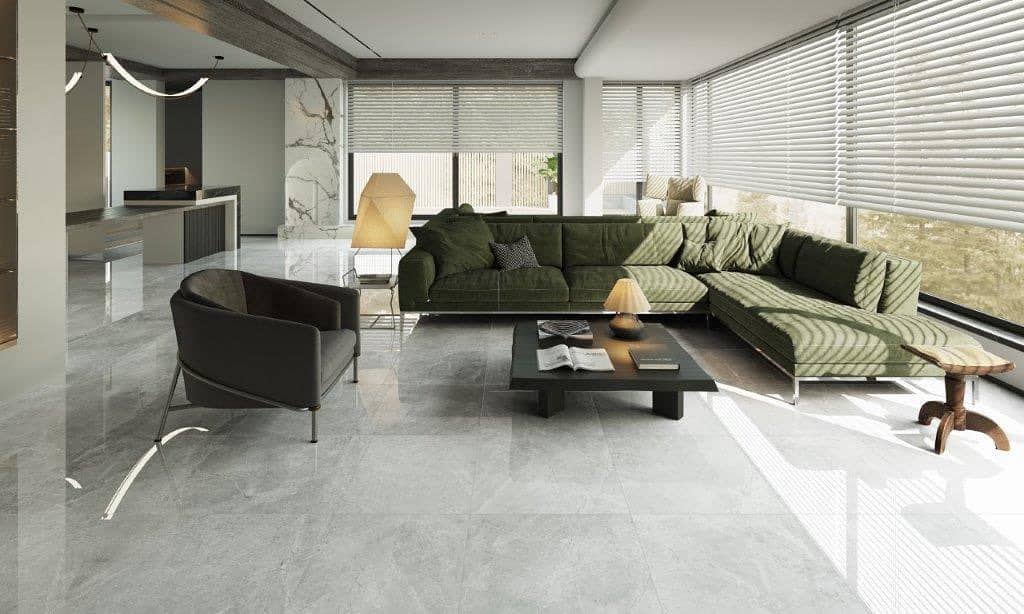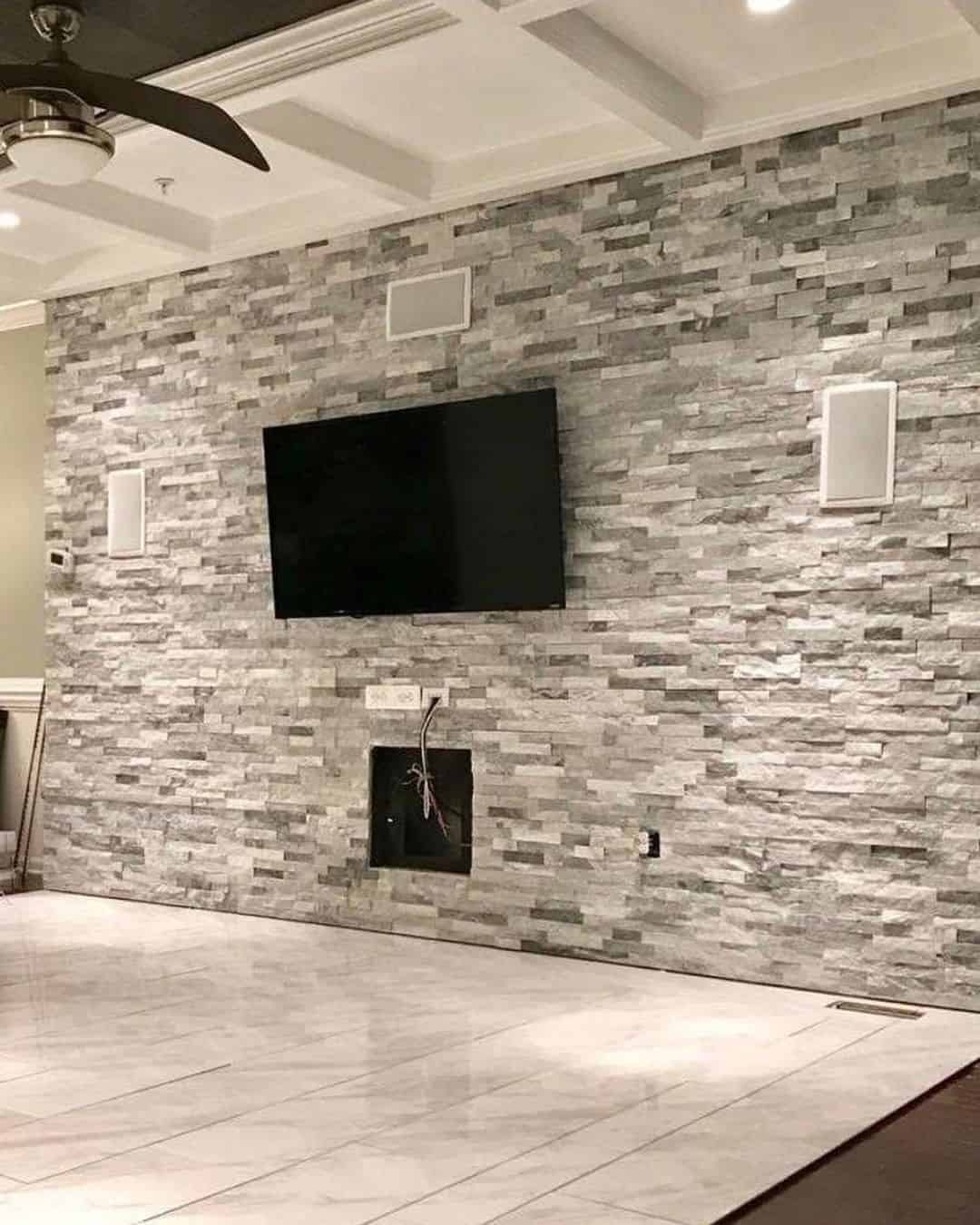Tiles are ceramic coverings for floors and walls made of firing, glazing clay, and various additives. The modern housing concept is almost unimaginable without a tiled kitchen or bathroom walls, shower walls, floors, paved terraces, balconies, and corridors!
In short, ceramic tiles are unthinkable on all horizontal and vertical surfaces where a durable material resistant to moisture, mold, mildew, or frequent trampling is needed.
Today’s tile market offers almost unlimited design choices in color, pattern, size, price, and even mosaic or wood-like versions. They are classified according to their purpose into two large groups: floor and wall tiles.
In practice, this means that you should use floor tiles on the floor, but you can also use them to cover the walls, but not the other way around!
And if you are wondering why the article will give you the answer!
Table of Contents
Can You Use Floor Tiles on Walls?
1. Ceramic Floor Tiles
Ceramic floor tiles come in a wide variety of formats and finishes. Ground granite is inserted while making them, so ceramics acquire characteristics almost identical to stone. The difference between stone and tiles is that they are less porous than stone, and they are less susceptible to moisture absorption.
Due to their impermeability, ceramic floor tiles are an irreplaceable element in the construction of modern living spaces, especially on surfaces such as shower floors that are constantly exposed to splashing water and elevated humidity levels, creating an always wet environment.
2. Porcelain Floor Tiles
Porcelain tiles have a water absorption rate of 0.5% or lower, as defined by the American Society for Materials (ASTM) in Section C373. The process of testing porcelain tiles is that the tile is first weighed, then “cooked” in boiling water for 5 hours, then left in plain water for 2 hours.
After the entire process, the tile is weighed again, and if the weight has increased by 0.5% or less due to water absorption from the surface, then we consider it a porcelain tile.
Precisely because of their higher water resistance, these tiles are suitable for outdoor use and home rooms with intense contact with water and moisture.
3. Wall Tiles
It is a little easier to choose suitable ceramics for the walls because wall tiles do not have to meet the technical characteristics indispensable for floor tiles. You can play with colors, texture, or dimensions because wall tiles suffer much less load than floor tiles.
Wall tiles are always double-fired and are softer than floor tiles. The finishing of wall ceramics can be matte, semi-glossy, and glossy, and the formats range from small tiles, such as mosaic tiles, to large tiles, 40 x 80 inches. The back of the wall tiles was selected for better bonding with the mortar.
Technical Differences Between Floor and Wall Tiles

Although at first glance, floor and wall tiles look the same or similar, there is a big difference in technical characteristics between these two categories. Let us list just a few of them:
- hardness,
- resistance to abrasion,
- mass,
- anti-slip of the product
So, let us compare them!
1. Hardness and Abrasion (PEI)
Compared to walls, floors are exposed to a much greater load. Namely, we walk on the floors, moving various weights, including traction, so the floor tiles must be more rigid and resistant to wear and abrasion.
How resistant the tile is to abrasion and wear is indicated by the PEI (Porcelain Enamel Institute) coefficient, where the number can be from 1 to 5, with the number 5 indicating maximum resistance.
Therefore, tiles with the coefficient 5 are suitable for heavy-duty foot traffic such as commercial or industrial settings.
For average residential areas or offices, it is recommended to use tiles with the PEI coefficient three because they are intended for light or moderate traffic.
However, this number is not particularly important for wall tiles because even on shower walls, you can use tiles marked PEI 1!
2. Slipperiness
Slip resistance is an important property of floor coverings essential for user safety. It is determined by the coefficient of friction. The coefficient of friction is the ratio of the tangential force and the vertical load of the sliding element when moving the sliding body on the surface.
The higher the coefficient of friction, the lower the slipperiness of a coating, and thus more excellent safety when using it.
The friction coefficient depends on the tiles’ surface, the circumstances (wet, dry), the presence of impurities (for example, oil), and relies on the surface of the tiles, the events (wet, dry), the presence of contaminants (for example – oil), and also on the footwear. As a rule, it is lower if the surface is smooth and shiny.
The coefficient of friction also decreases if there is dirt, oil, grease, and water on the floor covering because this creates a film on the surface. It will increase if the coating surface is rougher, therefore rough and uneven.
The embossed surface ensures better adhesion, even if it is dirtier or contaminated with oil, grease, and other impurities. The very nature of such a surface prevents it from forming a continuous film that would increase its slipperiness.
Suppose the surface of the tiles is rough. In that case, it is much more challenging to maintain the prescribed hygienic conditions, and this is also of great importance in some areas, for example, where food is prepared and where both needs should be met.
3. Anti-slip Tiles (R)

For safety reasons, floor tiles must be anti-slip. So their coefficient of friction is marked with R, which comes from the Floor RAMP Test and numbers from 9 to 13. A smaller number indicates a lower coefficient of friction, which means that tiles with that number are more slippery.
When purchasing floor tiles, be sure to look at this label! Proper selection, by the purpose of the space, will save you time and money and extend the life of the floor covering.
If you are not sure which tiles will best suit your space, here are their characteristics and purposes:
- R9 – indicates that the tiles are suitable for entrances and floors in the interior
- R10 – tiles suitable for shops, workshops, and residential kitchens
- R11 – residential kitchen floors, laundries, and workshops where there is moisture
- R12 – professional kitchens, dairies
- R13 – slaughterhouses, oil plants, and various technical services
And while slipperiness is one of the crucial factors for floor tiles, it does not play a significant role for wall tiles.
4. Absorption Coefficient (E)
Floor and wall tiles absorb water differently and, therefore, have different resistance to freezing. Their E coefficient determines how much and how they behave, which indicates resistance to water absorption and, thus, to freezing.
This coefficient is more related to external and internal use than the ability to be installed on floors and walls. So, if E is over 10%, those tiles are intended only for interior walls. 0.5 to 3% can also have wall and floor tiles for internal use.
The tiles are suitable for outdoor use when E is less than 0.5%.
5. Weight of Tiles
When you pick up wall and floor tiles of the exact dimensions, you will notice that wall tiles are always lighter! For this reason, floor tiles are much more challenging to process and lay than wall tiles.
It would be best if you had better quality tools and adhesives for laying floor tiles and better tools and adhesives than wall ones. In practice, this is not mandatory: floor tiles weigh from 44lbs to 55lbs per yd²,
6. Colors, Surface, and Format

Wall tiles can be smooth, rough, matte, semi-gloss, or glossy. Floor tiles are never smooth and shiny, even though sometimes you feel they are.
The format of both ceramic tiles and their patterns can vary. There are large-format wall tiles as well as small-format floor tiles. There are no rules.
Are Wall or Floor Tiles More Durable?
In the same conditions, floor tiles are more durable, but wall tiles are not walked on so that they may remain in good condition longer than those on the floor. However, this is not an argument for installing wall tiles on the floor!
Wall tiles are, as we explained above, thinner and less solid. If you place them on the floor, you will almost certainly have cracks, discoloration, and a slippery surface.
Conclusion
To sum up, floor tiles are more complex, more resistant to wear, heavier, thicker, less slippery, absorb less water, and therefore more resistant to freezing.
If you want to install floor tiles on walls or parts of walls, you can do it without fear! In some design solutions, the uniform appearance of the floor and division can be elegant, modern, and particularly attractive.
However, if you decide on such a solution, keep this in mind the floor tiles are heavier, so pay attention to the load-bearing capacity of the wall! Also, always use the appropriate adhesive since what sticks easily to wall tiles can fail with heavy floor tiles.
If you have any questions, additional concerns, or any experiences with installing floor tiles on the wall, please do not hesitate to contact us and share them with us.